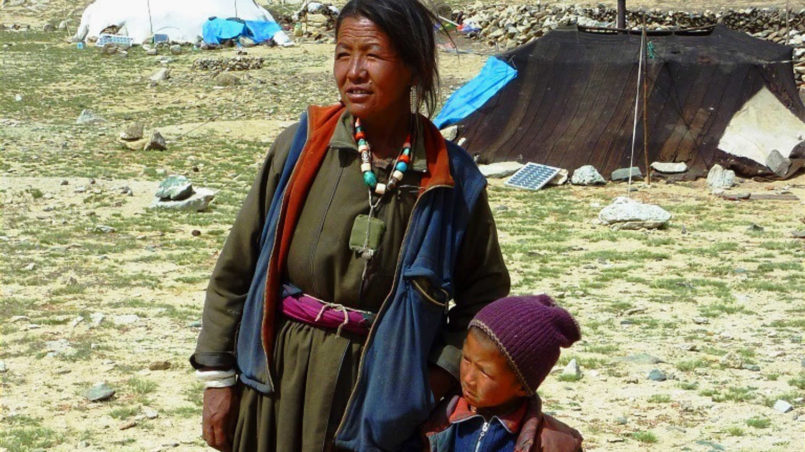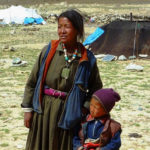The Last Living Nomads of Nepal: The Rautes

With the continuous advancement in technology, unlimited discoveries and rapid development, today’s world has reached its peak point of progress and modernization. Human life has become so easy and luxurious that people are living the life of dreams. Everything which was impossible in the past has not only become possible but a daily habit of today’s people. But, even though these miracles are happening in this modern world, there are some hidden facts and unnoticed realities that make us pinch ourselves and also make us bound to write about them.
Just like some of these unnoticed facts, I would here like to tell you about a highly endangered species of human beings in Nepal who are known as “Raute” and who are the last nomads of Nepal.
Raute, also known as Banraja (King of the forest), Raji (Little rulers), Banrawal (Rawal of the forest), Banmanchea/Banmanus (People of the forest), Jangali (Forest survivers) and Rautya are the nomadic ethnic group officially recognized by the government of Nepal. History shows the existence of these Rautes for more than 200 years and they are believed to be a part of the Tibeto-Burman ethnic group. Rautes speak Khamchi which is based on the Bhot-Burmess language. Khamchi – which means our talk – is also the language which sounds similar to Chepang. Chepang is the language which is spoken by Chepangs, one of the Mongolian communities in Nepal that lives in the Himalayan belt.
The actual population of Rautes is still unknown but the census of 2011 in Nepal showed the number of Rautes to be 618 while at the present time, the figure of the Raute population is believed to be only 150, a fact which has been mentioned in various news articles. In Nepal, Rautes are the permanent residents of western Nepal. Although Rautes can be found in different locations, they frequently live in different parts of the following districts: Dailekh, Jajarkot, Surkhet, Salyan, Kalikot, Achham, Jumla, Darchula, and Baitadi.
Traditionally Rautes celebrate festivals such as Nagpuja, Masto, and Bhairab Puja but they are great worshippers of Bhuyar (the hunting god) and nature (sun, river, and forest). Rautes believe that their main god, Bhuyar, does not want them to come into contact with outsiders, otherwise he will be angry with them and will not provide them with foodstuff and a settlement.
Rautes are still struggling to survive in the forest. They survive by hunting, gathering, and bartering and, because of this, their lives are full of struggle and also very primitive. A Raute’s way of life is guided by four main principles: no agriculture or animal husbandry, no education, no money and no permanent settlement.
The next reason why they move at such short intervals is also to avoid the clash or conflict with the people and villagers in the local community. Local people do not allow the Rautes to cut down trees which belong to their area or territory although the Nepal government has officially allowed them to use the forest woods. The reason why Rautes cut the trees is that they are fully dependent on the wood and products they gain from it. They cut different species of trees to make wooden products and they sell or barter them for grains.
Rautes refuse citizenship and fully ignore voting rights. They think that the citizenship certificate is only for landowners and it goes against their tradition. They think that it is a sin to sow seeds. Rautes say no to jobs and professions. Before moving to new places, Rautes look for a spacious area, a dense forest with the trees they need and fresh sources of water. They now live in temporary tents but previously they lived in thatched huts. Their temporary camps are made up of tents, attached with wooden branches or covered with leaves and cloth. Rautes possess only a hatchet, an axe, and a chisel to gather wild forest tubers, fruits, and greens. They make huts of twigs, tarpaulins, and leaves.
Rautes also traditionally move to a new place if someone dies within their community. The dead body of a Raute is clothed and buried with his/her possessions in a net used to kill monkeys. All the members of the Raute community, old, young, children, parents, everybody, has to carry their belongings and materials when moving to a new place. Rautes still don’t wear shoes or slippers their whole life. Wherever they go, they walk barefoot. Rautes also ignore medicine but nowadays Rautes are slowly becoming attracted to medicine and money.
To be continued …
Credits
| Image | Title | Author | License |
|---|---|---|---|
 |
Nomad_mother_and_son._Changtang,_Ladakh- | John Hill | CC BY-SA 4.0 |
